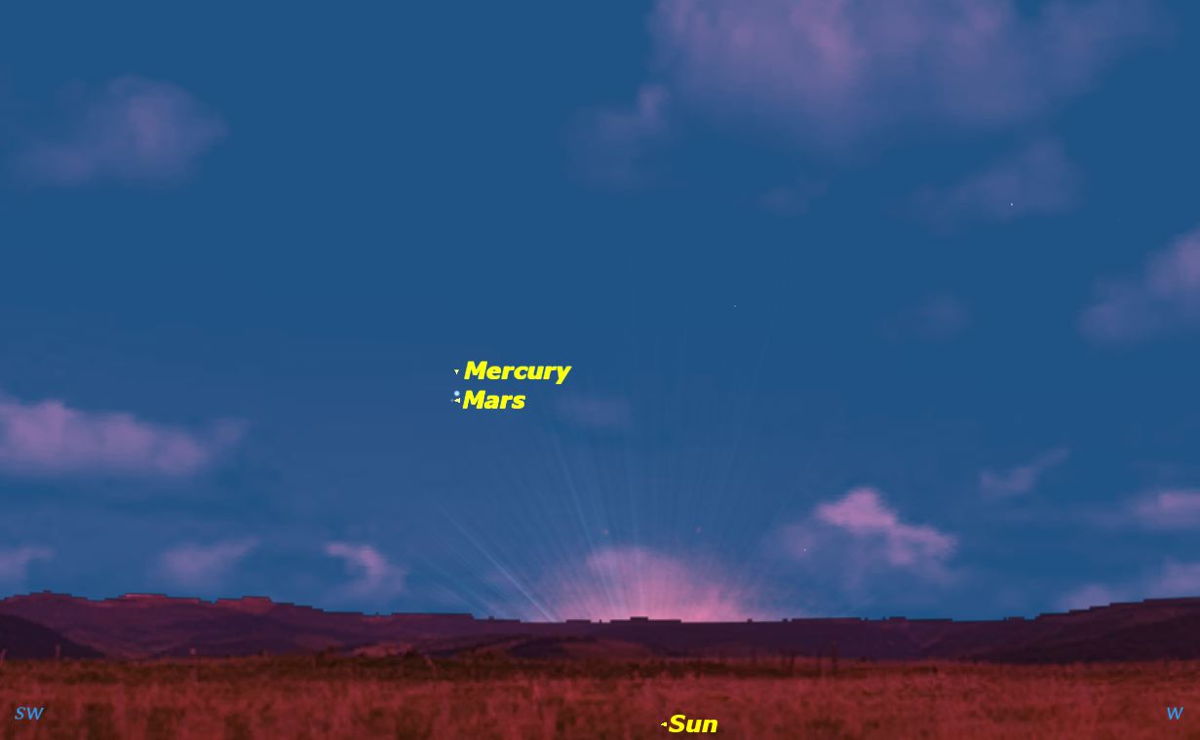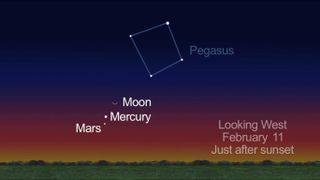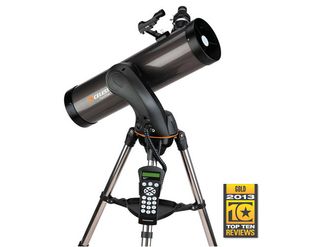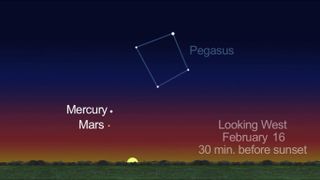Best Chance to See Elusive Planet Mercury Is Now

Despite being among the brightest objects in the sky, Mercury is a planet very rarely seen by even experienced stargazers. The next couple of weeks offer the best opportunity in 2013 for observers in the Northern Hemisphere to spot Mercury's tiny speck of light in the evening twilight sky.
The trick for spotting Mercury is first to find an observing location with a low unobstructed western horizon, wait for half an hour after sunset for the sky to darken, and then sweep to the left of the sunset with binoculars. Once you've initially located the planet with binoculars, you can usually see Mercury with the unaided eye. Don't wait too late, or Mercury will have set. In a telescope, Mercury appears as a tiny "half moon."
Probably the earliest you can spot Mercury will be on Friday night (Feb. 8). This is a special night because Mars will appear very close to Mercury in the sky, giving observers a view of two planets at once.
Appearances are deceptive, though, because Mercury will be on the near side of the sun while Mars is on the far side, putting them 1.162 times the distance of the Earth from the sun (108 million miles, or 174 million kilometers) apart. Because of its greater distance from both Earth and the sun, Mars will appear 2.2 magnitudes fainter than Mercury on astronomers' brightness scale. [How to see more planets in Feb. night sky (Video)]

A second opportunity to catch Mercury and Mars will occur three evenings later on Monday (Feb. 11). Though not as close together, the near proximity of a slender crescent moon will make finding the pair easier. Look with binoculars for the "dark side" of the moon illuminated only by Earthshine: sunlight reflected from Earth.
A third opportunity to see Mercury occurs on Feb.15, when Mercury is at greatest elongation from the sun. This places Mercury at its highest altitude this month for observers in the Northern Hemisphere. Mars will probably have sunk too far toward the sun to be visible.

Why are some apparitions of Mercury better than others? It has to do with the angle between the observer's horizon and the ecliptic, the path that the sun and planets follow across the sky.
Get the Space.com Newsletter
Breaking space news, the latest updates on rocket launches, skywatching events and more!
In the Northern Hemisphere, from February through April, the ecliptic at sunset is steeply angled to the horizon, placing Mercury relatively high. From August through October, the ecliptic lies almost parallel with the horizon at sunset, placing Mercury close to the horizon.
Take advantage of these opportunities to spot Mercury this month, and you’ll be able to say that you've seen something few astronomers have.
Editor's note: If you snap an amazing photo of Mercury in the night sky, or any other celestial object, and you'd like to share for a possible story or image gallery, please send images and comments, including location information, to managing editor Tariq Malik at spacephotos@space.com.

This article was provided to SPACE.com by Starry Night Education, the leader in space science curriculum solutions. Follow Starry Night on Twitter @StarryNightEdu.
Join our Space Forums to keep talking space on the latest missions, night sky and more! And if you have a news tip, correction or comment, let us know at: community@space.com.

Geoff Gaherty was Space.com's Night Sky columnist and in partnership with Starry Night software and a dedicated amateur astronomer who sought to share the wonders of the night sky with the world. Based in Canada, Geoff studied mathematics and physics at McGill University and earned a Ph.D. in anthropology from the University of Toronto, all while pursuing a passion for the night sky and serving as an astronomy communicator. He credited a partial solar eclipse observed in 1946 (at age 5) and his 1957 sighting of the Comet Arend-Roland as a teenager for sparking his interest in amateur astronomy. In 2008, Geoff won the Chant Medal from the Royal Astronomical Society of Canada, an award given to a Canadian amateur astronomer in recognition of their lifetime achievements. Sadly, Geoff passed away July 7, 2016 due to complications from a kidney transplant, but his legacy continues at Starry Night.












